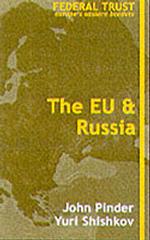- ホーム
- > 洋書
- > 英文書
- > History / World
Full Description
The Cambridge Prehistory of the Bronze and Iron Age Mediterranean offers new insights into the material and social practices of many different Mediterranean peoples during the Bronze and Iron Ages, presenting in particular those features that both connect and distinguish them. Contributors discuss in depth a range of topics that motivate and structure Mediterranean archaeology today, including insularity and connectivity; mobility, migration, and colonization; hybridization and cultural encounters; materiality, memory, and identity; community and household; life and death; and ritual and ideology. The volume's broad coverage of different approaches and contemporary archaeological practices will help practitioners of Mediterranean archaeology to move the subject forward in new and dynamic ways. Together, the essays in this volume shed new light on the people, ideas, and materials that make up the world of Mediterranean archaeology today, beyond the borders that separate Europe, Africa, and the Middle East.
Contents
1. A little history of Mediterranean island prehistory; 2. Inside out? Materiality and connectivity in the Aegean archipelago; 3. Early island exploitations: productive and subsistence strategies on the prehistoric Balearic Islands; 4. Islands and mobility: exploring Bronze Age connectivity in the South-Central Mediterranean; 5. Sicily in Mediterranean history in the second millennium BC; 6. Late Bronze Age Sardinia: acephalous cohesion; 7. Corridors and colonies: comparing fourth-third millennia BC interactions in Southeast Anatolia and the Levant; 8. The Anatolian context of philia material culture in Cyprus; 9. Bronze Age European elites: from the Aegean to the Adriatic, and back again; 10. Greece in the Early Iron Age: mobility, commodities, polities, and literacy; 11. Before 'the gates of Tartessos': indigenous knowledge and exchange networks in the Late Bronze Age far west; 12. Colonizations and cultural developments in the central Mediterranean; 13. The Iron Age in South Italy: settlement, mobility, and culture contact; 14. Migration, hybridization, and resistance: identity dynamics in the Early Iron Age Southern Levant; 15. Cultural interactions in Iron Age Sardinia; 16. Myth into art: foreign impulses and local responses in archaic Cypriot sanctuaries; 17. Mobility, interaction, and power in the Iron Age Western Mediterranean; 18. Sensuous memory, materiality, and history: rethinking the 'rise of the palaces' on Bronze Age Crete; 19. Beyond iconography: meaning-making in Late Bronze Age Eastern Mediterranean visual and material culture; 20. Changes in perceptions of the 'other' and expressions of Egyptian self-identity in the Late Bronze Age; 21. The lure of the artifact? The effects of acquiring Eastern Mediterranean material culture; 22. Stone worlds: technologies of rock-carving and place-making in Anatolian landscapes; 23. Rethinking the late Cypriot built environment: households and communities as places of social transformation; 24. Households, hierarchies, territories, and landscapes in Bronze Age and Iron Age Greece; 25. Connectivity beyond the urban community in central Italy; 26. Long term social change in Iron Age northern Iberia (ca.700-200 BC); 27. Who lives there? Settlements, houses, and households in Iberia; 28. Landscapes and seascapes of Southwest Iberia in the first millennium BC; 29. Domestic and settlement organization in Iron Age Southern France; 30. Beyond the general and the particular: rethinking death, memory, and belonging in Early Bronze Age Crete; 31. From the nineteenth century to the twenty-first: understanding the Bronze argaric lifecourse in the Mediterranean 'far west'; 32. Crossing borders: death and life in second millennium BC southern Iberia and North Africa; 33. An entangled past: island interactions, mortuary practices, and the negotiation of identities on Early Iron Age Cyprus; 34. The violence of symbols: ideologies, identity, and cultural interaction in central Italian cemeteries; 35. The Early Bronze Age Southern Levant: the ideology of an aniconic reformation; 36. Ritual as the setting for contentious interaction: from social negotiation to institutionalized authority in Bronze Age Cyprus; 37. Cult activities among central and north Italian protohistoric communities; 38. Ritual and ideology in Early Iron Age Crete: the role of the past and the east.






